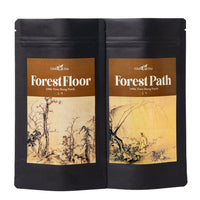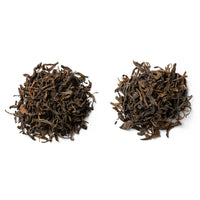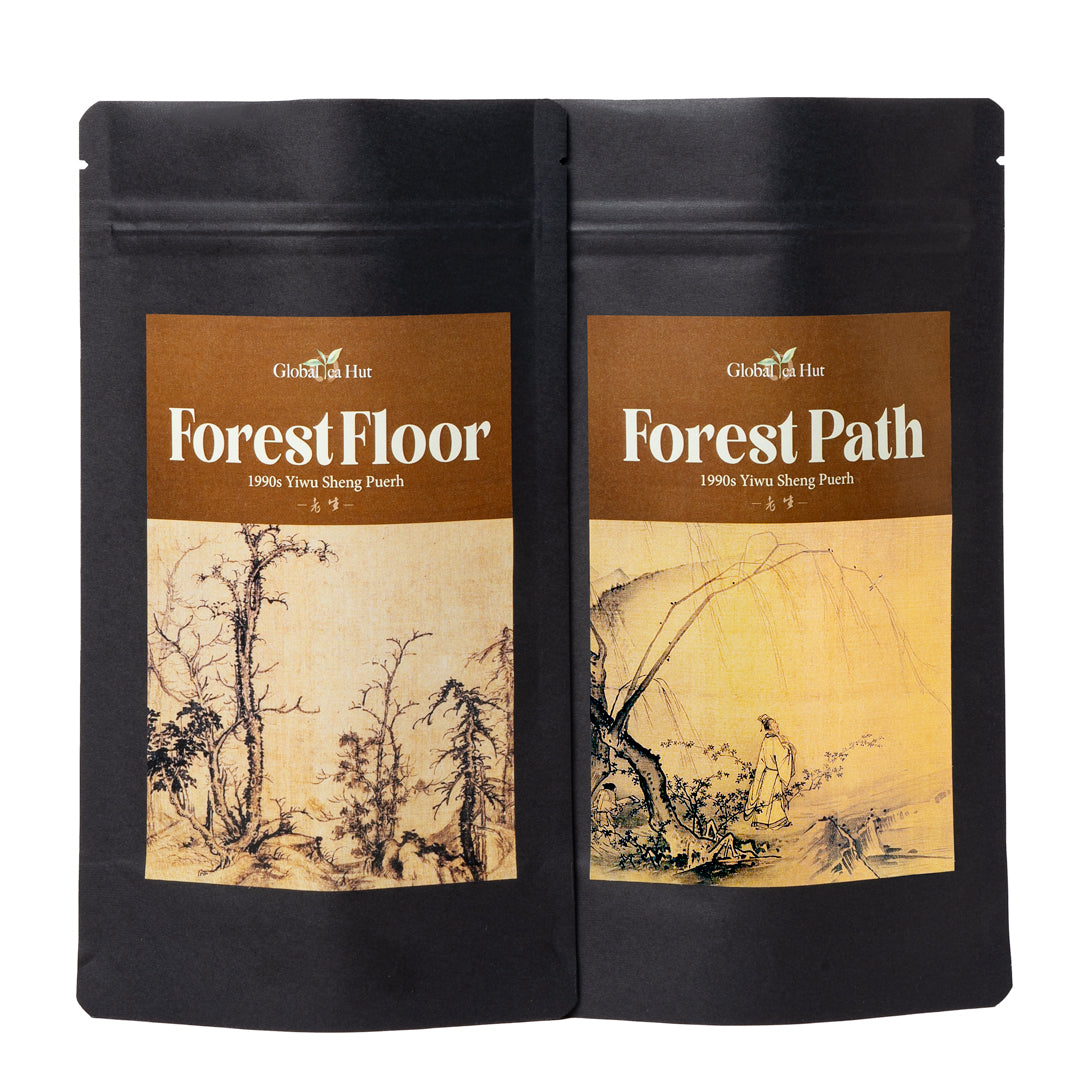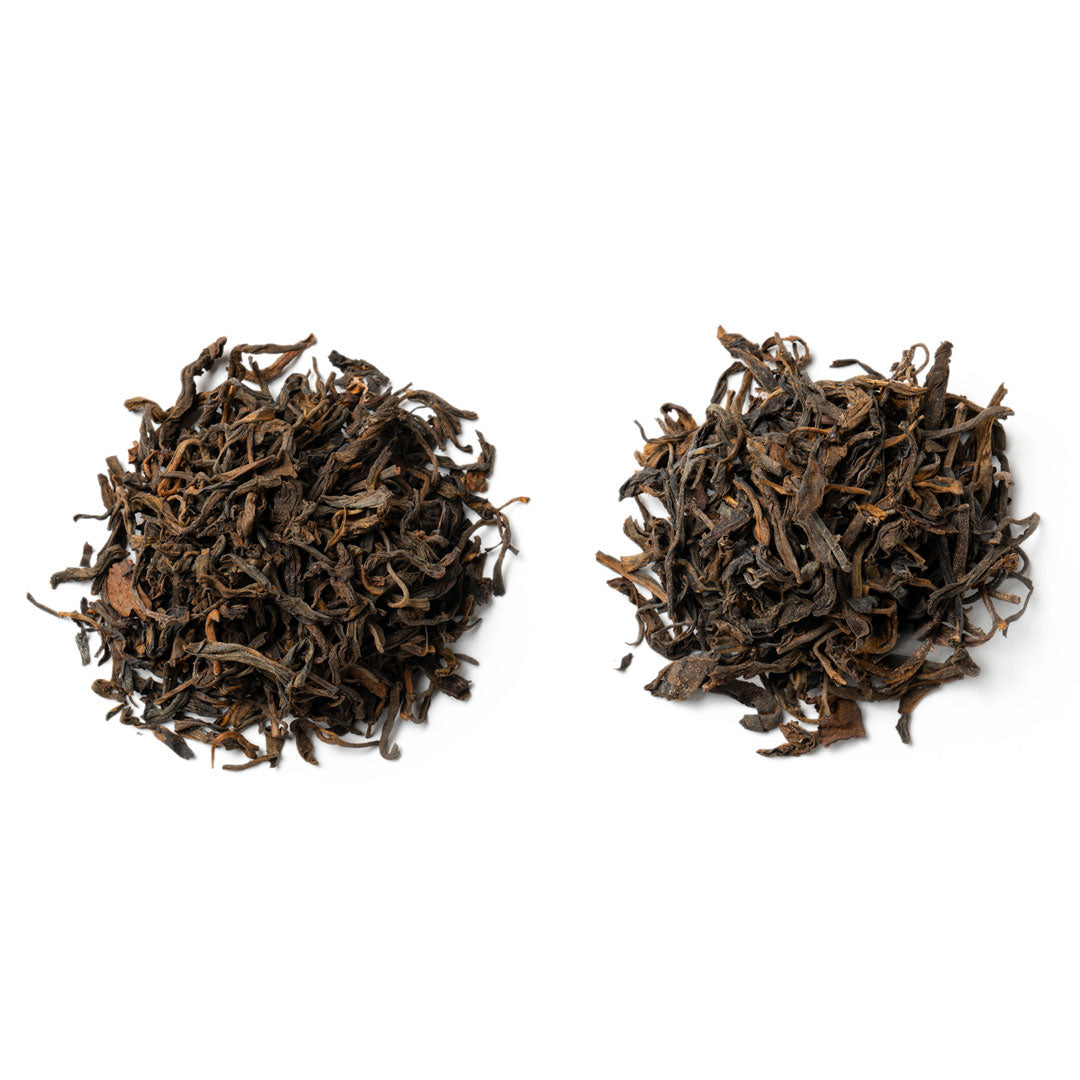

Energy Set
$65.00
We call this an energy set, as these teas are identical physically—from the same region, with same processing and storage conditions—but they have completely different Qi (energy), so they are the perfect teas to use to learn about energy variations in tea.
Most aged loose-leaf sheng are blends. This is why we often put the dates of such teas in quotes on our website. This is also the reason that such teas are so much cheaper than their cake cousins: they lack provenance and vintage. Loose-leaf teas from the “1960s” may cost hundreds or thousands for a jin (600 grams), but a cake from that time would be several tens of thousands of dollars and only be around 300 grams (traditional cakes are 357 grams at pressing, but always suffer attrition at the edges over time). Cakes have a vintage—they have a wrapper, an inner trademark ticket (nei fei) and other identifiable features that allow us to date them. Loose-leaf teas do not. Loose-leaf puerh often starts out blended but then is also added to over time as new owners purchase it. That is why a “1960s” loose-leaf puerh is rarely from the 1960s, though it may contain tea from that period—there really is no way of knowing. Most are blends of a well-aged tea, a younger wet-stored tea and a bit of shou. The only way to evaluate loose-leaf sheng teas is to rank them against one another, determining quality by drinking lots of them and then comparing them to one another—not age, especially the age quoted at the shop.
Forest Path and Floor are a bit different, though. They are blends of maocha from the late 1990s derived from trees in the greater Yiwu region. They have only ever had one owner who stored them from then until now. He is a good friend, and someone we trust, so this tea is a bit different from most loose-leaf aged sheng puerh teas, and allows us to pin a date on this tea we ordinarily cannot do, which can influence how we date and evaluate all other loose-leaf aged sheng as well.
The second lesson we can learn from this tea is about storage. It is nigh impossible to store loose-leaf sheng in Taiwan or Hong Kong without it being what is called “wet storage.” (This is another reason why cakes are better.) There are two types of wet storage: natural storage in more humidity and “traditional Hong Kong storage,” which involves intentionally cellaring. Wet-stored puerh is a world in itself. Forest Floor is damp, musty and involved. This may not be to everyone’s taste (we love wet-stored teas). If it isn’t to your taste, do a longer rinse. Remember, the last thing in is the first thing out. Since this tea isn’t crazy old, it should lose some of the storage flavors as the session unfolds.
By far the most important lesson has to do with the fact that these teas come from the same trip to Yunnan (age), the same region and were stored next to one another in the same way. And yet, they have completely different energies!
It is amazing to compare two teas that look, taste and smell the same, but feel totally different in the body. Forest Floor scatters you. As the name suggests, the session leaves you open and lost. It has no direction, in other words. Forest Path, on the other hand, has a very specific direction and unfolds, steeping to steeping, in a progressive way. It is more like a quick walk through the woods, staying on the path, as opposed to getting lost. The experience of comparing these teas is incredibly rewarding, allowing us to experience energy as a variable isolated from other features of these teas.
This set comes with 50 grams of each tea.


